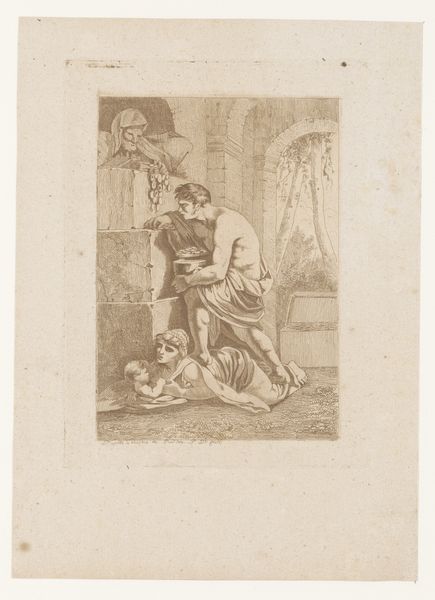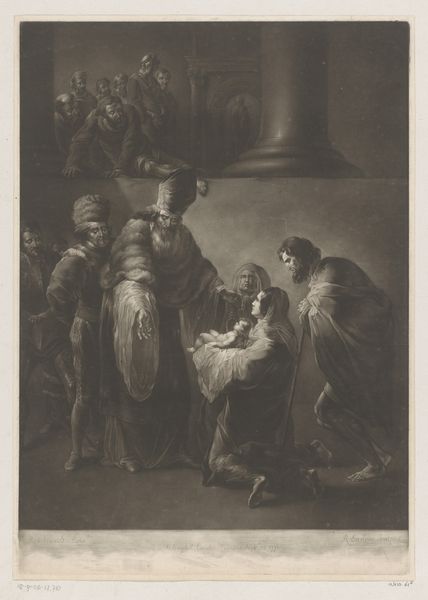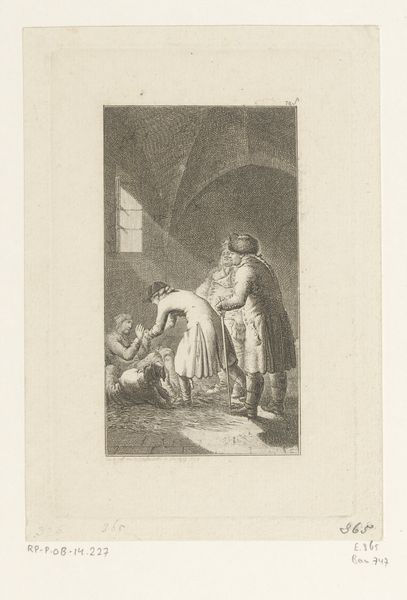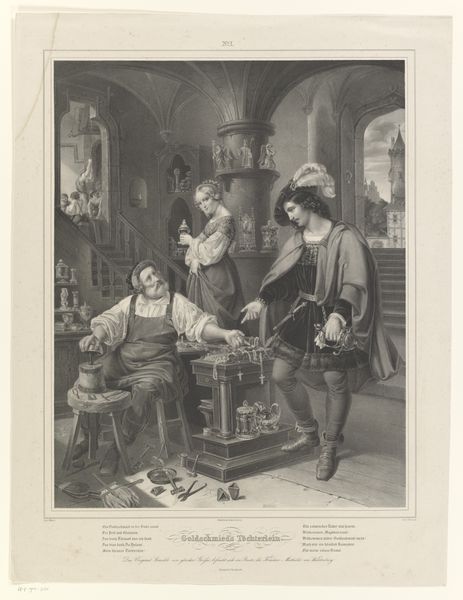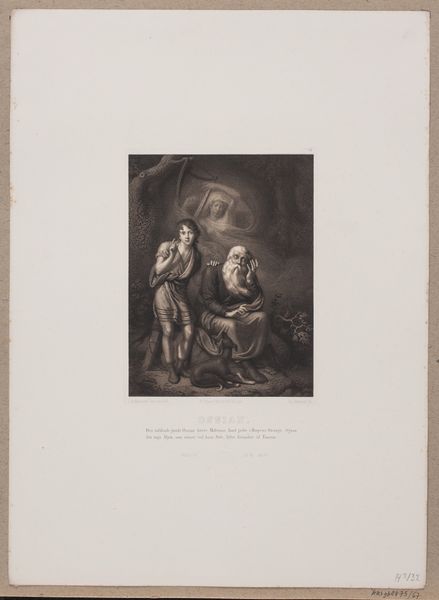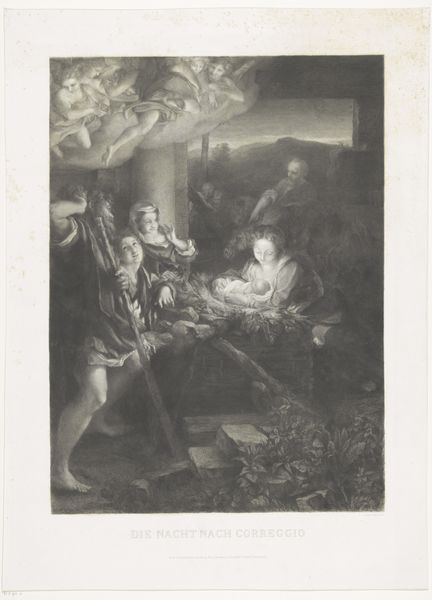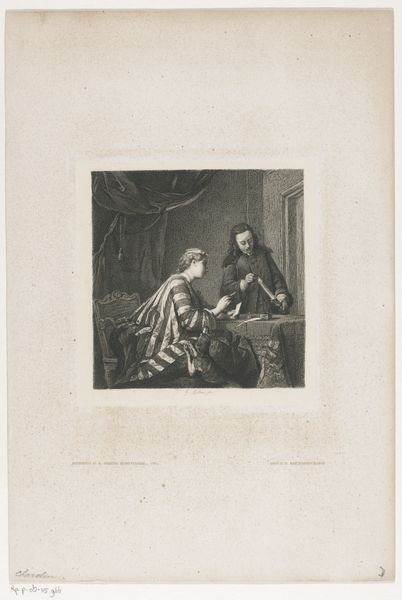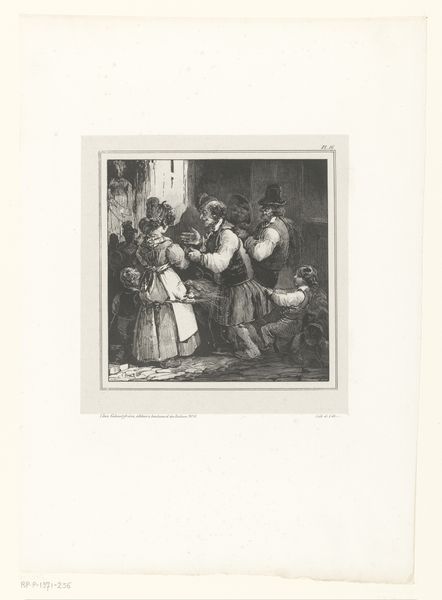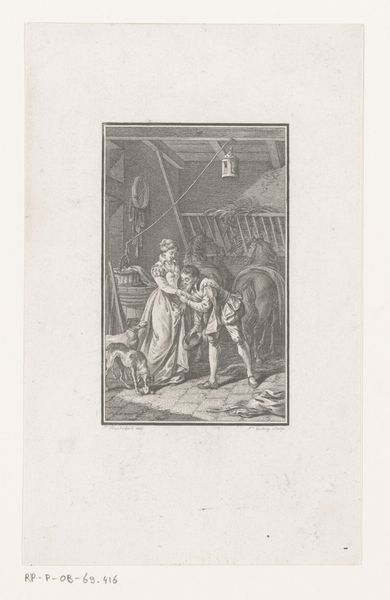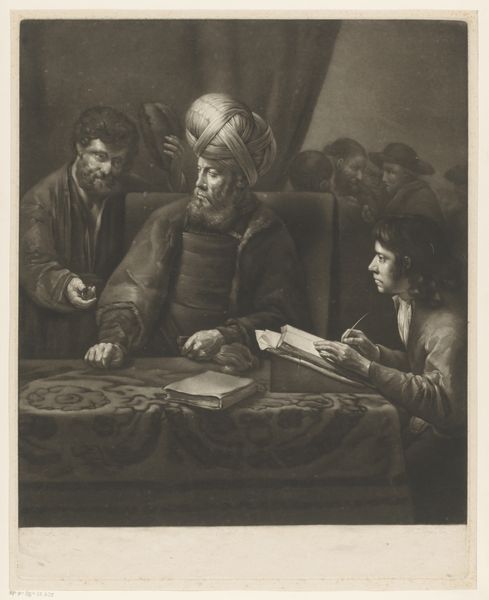
Vrouw en kinderen treurend rond zieke man 1823
0:00
0:00
print, engraving
#
portrait
#
16_19th-century
#
narrative-art
# print
#
charcoal drawing
#
figuration
#
romanticism
#
19th century
#
line
#
genre-painting
#
engraving
Dimensions: height 414 mm, width 285 mm
Copyright: Rijks Museum: Open Domain
Editor: Here we have "Vrouw en kinderen treurend rond zieke man," or "Woman and children mourning around a sick man," an 1823 engraving. The somber expressions and cramped setting really emphasize the family's suffering. What do you see in this piece beyond the immediate depiction of grief? Curator: I see a poignant commentary on societal vulnerability. Consider the era: 19th-century Europe was grappling with immense social upheaval and stark economic disparities. This image isn't just about individual grief; it's a reflection on the precarity of the working class. The gaunt faces, the threadbare clothing, even the attic setting - these elements highlight the systemic issues that render families susceptible to such devastating circumstances. Editor: That's a compelling point. I hadn't considered the socio-economic implications so directly. So, it's not only about a family's personal tragedy, but about who is allowed to suffer, right? Curator: Precisely. The Romanticism period, to which this work belongs, often idealized the suffering individual. But here, there's a crucial distinction: Aubry-Lecomte's work underscores how social conditions dictate who is positioned to experience, and indeed perform, suffering. Who is valued, who is provided resources and support? We have to see who is rendered invisible, left to fend for themselves within systems stacked against them. Notice also how gender operates here - how is the woman, ostensibly in charge of holding her family, constrained by socio-economic circumstances and her access to power? Editor: It really reframes the image to think about it in terms of social structures, rather than just a personal tragedy. I never really considered Romanticism in that light. Thank you. Curator: It’s about looking critically at the familiar and recognizing its potential to challenge dominant narratives and encourage necessary social change.
Comments
No comments
Be the first to comment and join the conversation on the ultimate creative platform.
